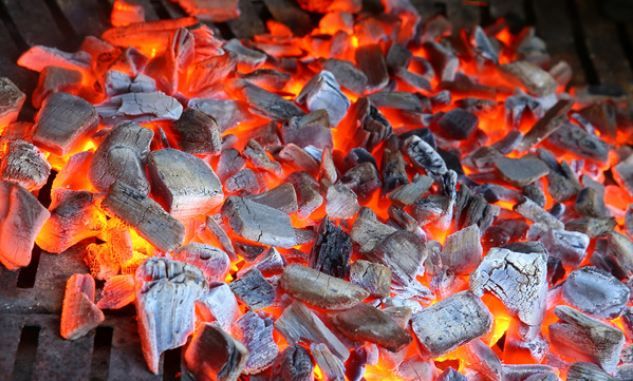04/12/20
Types of Charcoal Obtainable in Nigeria for Export - Bdhi Export

About Charcoal
This is an impure form of graphitic carbon obtained as a residue when carbonaceous material is partially burnt or heated with a limited amount of oxygen.
Charcoal is a lightweight black carbon residue produced by removing water and other volatile constituents from animal and plant materials.
Charcoal is produced by slow pyrolysis which is the heating of wood or other organic materials in the absence of oxygen.
Uses of Charcoal
Metallurgical fuel--: charcoal burns at temperatures exceeding 1100 degrees Celsius (2010 degrees Fahrenheit), the melting point of iron is approximately 1200 to 1550 degrees Celsius (2190 to 2820 degrees Fahrenheit).
Charcoal has been used for the production of iron since Roman times and steel in modern times where it also provided the necessary carbon.
Due to the porosity of charcoal, it is sensitive to the flow of air and the heat generated can be moderated by controlling the airflow to the fire.
Cooking fuel--: Prior to the industrial revolution, charcoal was occasionally used as cooking fuel.
Pyrotechnics---: charcoal is used in the production of black powder which is used extensively in the production of fireworks.
Charcoal produces fine dark orange golden sparks. Usually, powder with a mesh size from 10 to 325 is used to obtain showers of golden sparks in pyrotechnics compositions...
Water purification --: charcoal is also used for water purification, used to adsorb odor or colored substances from gases or liquids as in the purification of water and many other products.
Charcoal is used in gas masks for the removal of toxic compounds from the air.
Charcoal is used as catalysts in making certain chemicals in the production of cosmetics and drugs. The role of charcoal in cosmetics is based on its highly effective absorbing properties at a microscopic-scale. Charcoal may be used as a source of carbon in chemical reactions. One example of this is the production of carbon disulphide through the reaction of sulfur vapors with hot charcoal.
Heat source --: charcoal can be burnt as a source of heat in various homes in the cold region of the world.
- Place charcoal in open bowls or perforated plastic bags in your fridge or drawers to banish odors.
- Place a few lumps of charcoal in your toolbox to absorb moisture and keep metal from oxidizing.
- Break charcoal into chunks about 1inch and spread them on beds or beneath bushes to keep the soil moist and suppress weeds.
- Charcoal can also be used to increase the carbon content of your compost pile.
Different Types of Wood Charcoal
These are charcoal produced as a result of burning natural wood with low oxygen to produce wood charcoal.
Natural wood charcoal can be differentiated in many ways
1. Shape of charcoals which are
i. Lump shape wood charcoal, also known as irregularly shaped wood charcoal.
ii. Stick shape wood charcoal, also called finger charcoal.
2. By their sizes which are
i. BBQ charcoal, which is mostly from 40mm downwards
ii. Restaurant grade wood charcoal, these are big sizes from 40mm to 200mm
iii. Shisha grade wood charcoal. This is always in stick shape and makes use of the best wood.
3. By wood types which are of different types depending on the country and the type of trees they have.
Here in Nigeria, we have,
- Ayin wood charcoal as our best wood charcoal
- Acacia wood charcoal
- Oakwood charcoal
- Mahogany wood charcoal
- Rosewood charcoal
Mixed wood charcoal is a mixture of all of the above.
Qualities to consider when buying wood charcoal
i. Burning time
ii. Carbon contents
iii. Ash content
iv. Burning rate/ calorific value etc
There are many benefits to cooking with natural wood charcoal. Natural wood charcoal burns very hot with temperatures reaching between 800 - 1,000 degrees Fahrenheit. One pound of natural wood charcoal produces the equivalent heat of two pounds of charcoal briquettes, so it will also save you money.
Features of natural wood charcoal
--100% natural with no additives
--Made from renewable hardwoods
--Lights very easily, burns clean and produces little ash
--The fire from natural wood charcoal will quickly get to cooking temperature in as little as 7-10 minutes
Charcoal Briquettes
Another popular method for cooking with charcoal is using charcoal briquettes.
Charcoal briquettes are machine-made charcoal. They are particles of other materials like sawdust,, or wood scraps mixed with binders and compressed machines to the shape they want.
Briquettes can come in different colors and shapes... Like gold, silver, or black.
Features of charcoal briquettes
--: Can be used for heating, cooking, and also adding flavor to foods
--: More consistent in size
--: Takes 20-25 minutes to get to cooking temperature, about twice the time as natural lump charcoal
Activated charcoal --: This is similar to natural wood charcoal but is made specifically for medical use.
To produce activated charcoal, manufacturers heat normal charcoal in the presence of a gas that causes the charcoal to develop many internal spaces or pores. Those pores help activated charcoal trap chemicals.
